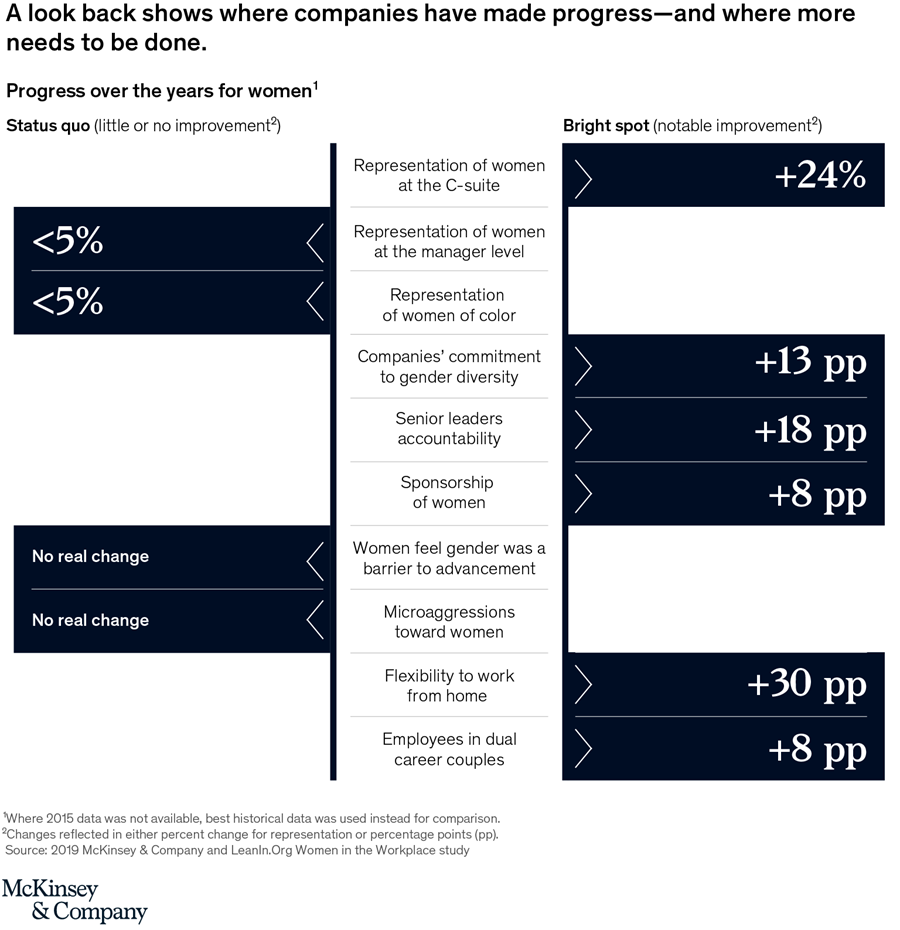
Here is an excerpt from an article written by Jess Huang, Alexis Krivkovich, Irina Starikova, Lareina Yee, and Delia Zanoschi for the McKinsey Quarterly, published by McKinsey & Company. To read the complete article, check out others, learn more about the firm, and sign up for email alerts, please click here.
* * *

In the last five years, we’ve seen more women rise to the top levels of companies. An increasing number of companies are seeing the value of having more women in leadership, and they’re proving that they can make progress on gender diversity. This is an important step in the right direction.
Still, women continue to be underrepresented at every level. To change the numbers, companies need to focus where the real problem is. We often talk about the “glass ceiling” that prevents women from reaching senior leadership positions. In reality, the biggest obstacle that women face is much earlier in the pipeline, at the first step up to manager. Fixing this “broken rung” is the key to achieving parity.
The culture of work is equally important. All employees should feel respected and that they have an equal opportunity to grow and advance. Employees care deeply about opportunity and fairness, not only for themselves but for everyone. They want the system to be fair.
Done right, efforts to hire and promote more diverse candidates and create a strong culture reinforce each other. A more diverse workforce will naturally lead to a more inclusive culture. And when a company’s culture feels fair and inclusive, women and underrepresented groups are happier and more likely to thrive.
By fostering diversity, building a culture of opportunity and fairness, and focusing their attention on the broken rung, companies can close their gender gaps—and make progress on the road to equality.
In this article, we share highlights from the full Women in the Workplace 2019 report, diving deep on the parts across pipeline and employee experience that will be most critical for companies to drive change in the next five years.
* * *
Here is a direct link to the complete article.
Jess Huang and Irina Starikova are partners in McKinsey’s Silicon Valley office, where Delia Zanoschi is a consultant; Alexis Krivkovich and Lareina Yee are senior partners in the San Francisco office.